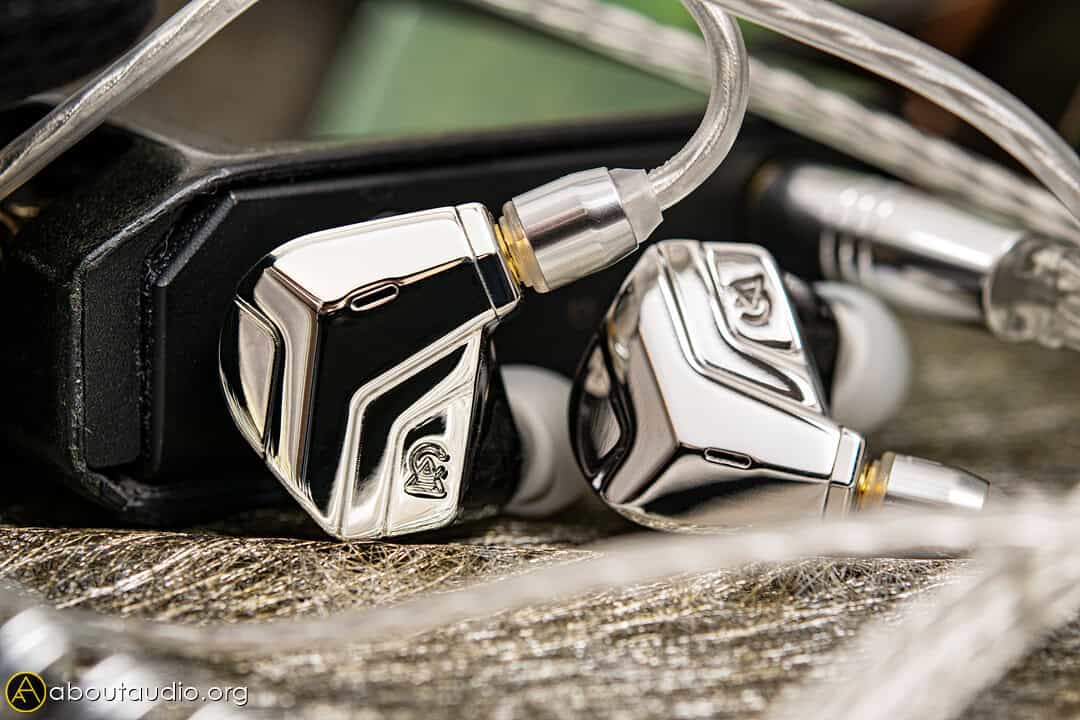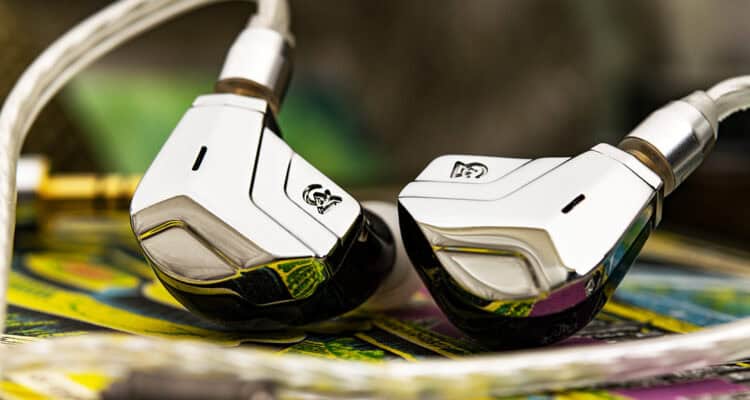
The Bass: Dynamic yet evenly distributed
Astrolith has a rich w-shaped sound signature with slightly extra elevation on the lows. My past experience with planar drivers’ bass is that they’re agile and vast yet don’t have the depth and smoothing creaminess that a well-built dynamic driver would. However, it wouldn’t be an exaggeration that Astrolith has achieved the best of both dynamic drivers and typical planars. The lows dive deep with prominent ultra-low extension and tone color.
However, it’s noticeably more agile and quick in response than most dynamic drivers, leading to lively and up-to-speed dynamics. The bass is full in body with a quantity that sits somewhere between v-shaped and V-shaped, an amount that would satisfy the general most unless you’re specifically looking for a basshead or flat IEM.
While the bass quantity won’t be slamming you in the head, Astrolith’s deep-nuanced bass and its thorough depth draw a satisfying grand, fully captivating bass stage. The bass grooves are thick but not muffled in texture details, living up to the flagship standard in terms of resolution.
Alongside, what I’ve been appreciating from Planar Driver all along is also prominent – the vast bass room and evenness across the range. In fact, Astrolith low-end shows significantly better control than planar IEMs I’ve experienced before. The bass flows with excellent stability and shows no unnecessary fluctuation other than the natural bass dynamics itself. Astrolith’s bass is basically Campfire’s take on creating a next-generation dynamic driver through a planar driver.

Mid-range: Incredibly in-depth yet not suffocating
Next to our table is the vocals. I was very questionable about how Campfire Audio would tune the vocals, as in my opinion, the planar driver’s most prone frequency range is the mid-range. Unnatural timbre and dryness are issues that aren’t rare from companies that tried to implement planar drivers in an in-ear. Astrolith is an exception. Not only do the vocals sound resolving in texture details and brilliance, Astrolith possesses creaminess to both the tone and texture, keeping it completely fatigue-free, and smooth as a butter.
Vocals have a neutral-warm tone while the upper mids shed airiness and a gently cooler tone, giving breathable air towards the headroom ceiling. Not only the upper mids, but Astrolith shows adequate transparency throughout the vocal range, giving a pleasant sense of penetration and resolving vocal details without tiring the ears or getting hot. Astrolith keeps the texture-digging nature of planar drivers while excluding any dryness or harshness.
Just as shown from the bass, the steady and consistent vocal timbre, and flow is what Astrolith nails once again. Tuning an IEM purely out of planar drivers would usually have the sibilance area prone to sharp hiss, warp, dip, or turbulence, yet Astrolith’s AAOI Chamber and PPR Chamber must be doing their job well, as Astrolith makes a surprisingly linear, accurate tonal balance. Not a boring type of tone but a creamy, lush tone that is enjoyable to listen to – that unique tone that oozes the flagship feel.
Another element that I find impressive is the depth of the vocals. While most planar IEMs do well at digging out details, many of them lack depth. That in-depth, deep perception. As if using a high-quality dynamic driver, that also shows characteristics of a planar driver, Astrolith’s vocals sound deep and carry weight.

Sound Impressions: Highs, Separation, and Layering
The tiny 6mm Planar driver may be small but still much larger than multiple EST nozzle tubes. Astrolith’s highs surprised me with their mature technicality – and what I mean by “mature technicality”, is that trebles are extremely detailed and well-nuanced but also meticulously tamed in texture and tone. They’re detailed, crisp, and extensive towards the super-highs without getting hot.
Astrolith is an IEM that makes hitting top-notch treble performance look easy, single-planar-handedly. Trebles don’t honk or get shouty which I and most others highly dislike, while being sparkly clean, clear, and splashes with details. It has the silkiness of a multi-EST driver, or actually even silkier, and brings out better separation and layering details.
On top of that, Astrolith’s trebles are extremely organic while not sounding boring, keeping a water-like neutrality. If you want richness but also can’t give up that reference, monitoring-like accuracy, Astrolith’s treble, and its planar tweeter topped with PPR Chamber may be the best option you could choose among the flagship IEMs available on the market.
Next Page: Comparisons with Campfire IEMs / Verdicts


